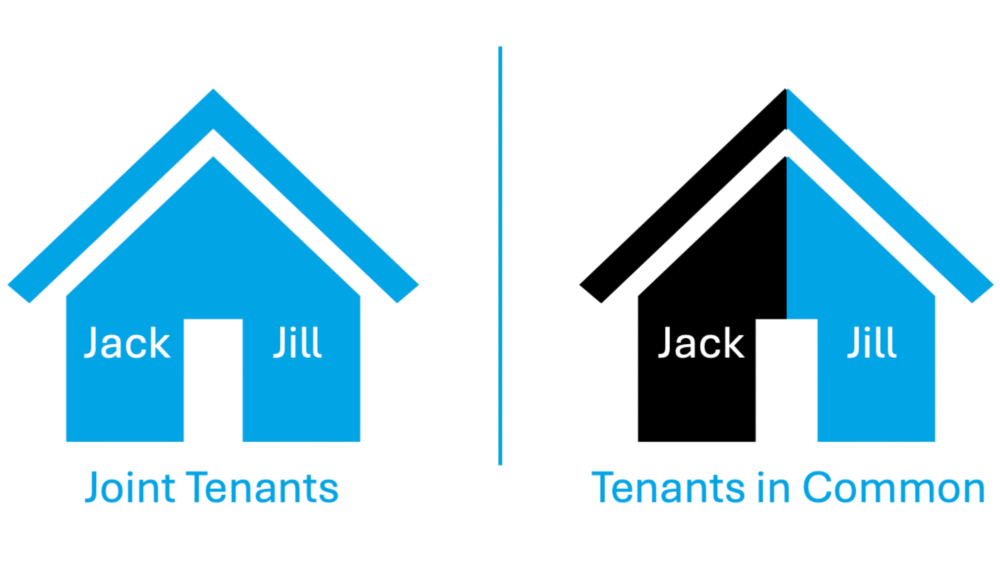What is severance of joint tenancy?

The above picture is a useful illustration of joint tenants versus tenants in common.
In South Australia, property can be owned by couples in two ways – as joint tenants or tenants in common. Understanding the difference between these types of ownership is crucial, particularly for those in blended families or anyone wanting control over how their share of the property is dealt with after death.
Joint Tenants vs Tenants in Common
Most people who buy a home together hold the title as joint tenants. This means both parties own the entire property together, and if one dies, the other automatically inherits the deceased’s share through the right of survivorship – regardless of what is written in their Will. While this setup is convenient and appropriate for many couples, it can lead to unintended consequences, especially for blended families or couples who have separated.
For example, if a husband and wife (each with children from a previous relationship) own a house as joint tenants and the husband passes away, the wife becomes the sole owner, even if the husband’s Will says he wants his share to go to his children. Those children may end up with no entitlement to the property, particularly if the surviving wife does not include them in her own Will, later remarries, or changes her Will to exclude the husband’s children.
In contrast, tenants in common hold separate, defined shares (usually 50/50) in the property. This allows each owner to leave their share to whoever they choose in their Will. If we draw upon the previous example, the husband could choose to leave his half of the property to his children, once the wife stops living in the property or remarries, helping to preserve the children’s inheritance.
Why severing a joint tenancy might be a good idea
Severing a joint tenancy changes the form of ownership from joint tenants to tenants in common. This shift is often a smart move in scenarios where one or both parties want to ensure their share of the property goes to specific beneficiaries.
Severing a joint tenancy is also useful in situations where joint tenants have separated, but have not yet completed a property settlement in the Federal Circuit and Family Court of Australia. While this may not always be necessary, it is extremely important when there is a risk of one joint tenant dying before a property settlement is finalised (for example, being terminally ill), or in situations where the parties don’t intend to get a formal property settlement for an extended period of time.
Once a tenancy is severed, owners can include a life interest or right of residence in their Will, allowing the surviving partner to continue living in the property for a set time or for life, before the deceased’s share passes to their chosen beneficiaries. This provides a fair and flexible solution that balances the interests of the surviving partner and the children of the deceased.
How to Sever a Joint Tenancy in South Australia
A conveyancer or solicitor can assist you with transferring your property from joint tenants to tenants in common. This can be done with the agreement of both parties, or unilaterally by one party, without the other’s consent. No money needs to change hands, although lodgement fees will apply.
Final Thoughts
Severing a joint tenancy is an important legal tool to protect your interests in a property. Always seek legal and financial advice before making any changes to your property ownership structure, to make sure it aligns with your broader legal and financial goals.
Get in touch
TGB Lawyers’ Property Law team can help you with Joint Tenancy severance, or any other enquiries relating to Real Estate & Property transactions, including Conveyancing. Talk to an experienced Property lawyer today.
Find out more – Real Estate & Property